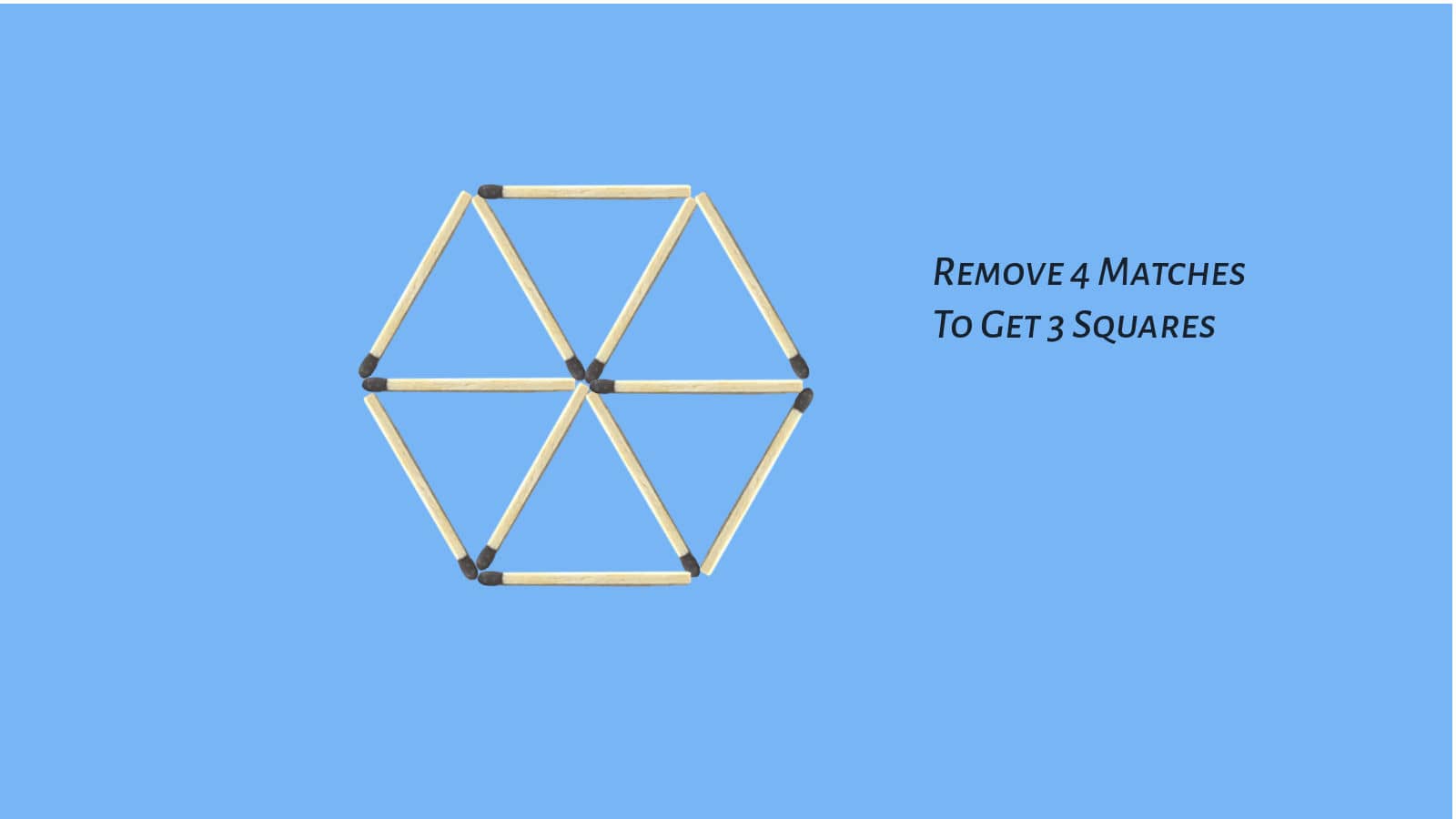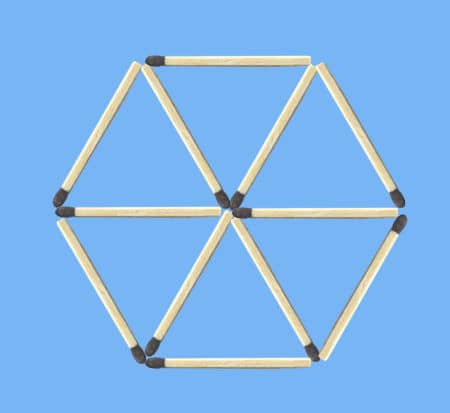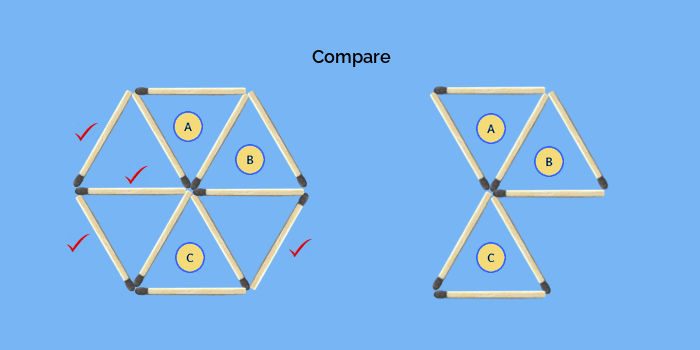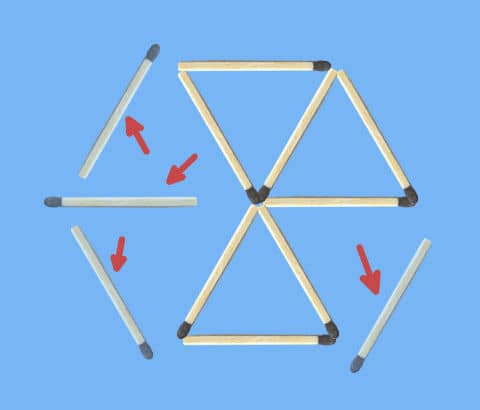
Matchstick puzzle: Remove 4 sticks to leave 3 triangles in hexagonal wheel
Remove 4 sticks to leave 3 triangles in hexagonal wheel matchstick figure.

Recommended time to solve 8 minutes.
Hint: First solve: Remove 3 to leave 4.
How many ways can you do it?
Give it a try. It won’t be difficult.
Instead of any random approach, we’ll solve the puzzle systematically. We’ll use common stick analysis on the structure to discover the key information needed to reach the solution.
We’ll ask ourselves a series of important questions, analyze the puzzle for answer and make conclusions.
Solution to the matchstick puzzle: Remove 4 sticks to leave 3 triangles in a hexagonal wheel
By Common stick analysis and the Question analysis answer technique
The first job when solving any matchstick puzzle is to count the total number of matchsticks. It is 12 in six triangles forming the wheel of a hexagon.
Then we ask two questions,
Question 1: How many matchsticks are needed to form 6 independent triangles? It is simply 18.
Question 2: How could then only 12 matchsticks form the six triangles?
Answer 2: The 6 triangles have between them also 6 common sides of matchsticks. By the concept of common matchstick, each common matchstick would reduce the number of sticks needed to form independent triangles by 1. Six common matchsticks would reduce the number of matchsticks needed from 18 to 12.
Common stick concept: For a stick common between two triangles, the number of sticks to form the two triangles is reduced from 6 to 5 because of 1 common stick.
Next question is crucial. It asks about the solution. We have to know about the solution also, isn’t it?
Question 3: What would be the total number of sticks and the number of common sticks in the solution figure?
Answer 3:
- After removing 4 from 12, there would be 8 matchsticks left. Fine. What about common sticks?
- As three independent triangles would need 9 matchsticks, with 8 matchsticks, the solution figure would have to have 1 common stick between two triangles with the third triangle as independent.
Question 4: How would the solution figure look like? We are trying to actually find a solution figure just by analysis and reasoning.
At this point, let us have a look at a figure of three equilateral triangles, but made up of 9 sticks by the very simple action of removing three alternate sticks on the periphery, as shown.

Well, reducing the need of one more stick is dead easy from this point. Just merge the top two triangles, and you will have your solution figure shown.

Don’t stop at this point. We have not solved the puzzle yet, rather we are now quite past the halfway mark. We do not know yet which 4 matchsticks are to be removed to get our solution.
That should be easy. Just compare the solution on the right and the puzzle figure on the left, and you will know.

Select the top two adjacent triangles of the puzzle figure A and B, as not to be touched. A third triangle C does not have any common side with either of the two fixed. So it should not be touched as well.
Except these three, remove the rest of the matchsticks from the puzzle figure.
The number of matchsticks removed would certainly be 4, and you would be left with three triangles. It is logic and an account of common matchsticks.
The solution is shown.

You can solve the puzzle in any way you may feel. Do try. And try to beat this simple path to the solution.
How many solutions would be possible?
That also is easy to see.
The solution figure satisfies the simple but stringent criterion,
Out of the three triangles, two triangles must have one common side, but not the third.
As the puzzle figure is rotationally symmetric, whatever way you choose these three triangles, all such choices would be the same when rotated.
Rotationally unique solution is only 1.
Happy puzzling.
Know how to solve difficult problems easily without wasting time on random attempts
Our ebook on puzzle solutions by innovative methods will show you just that.
Puzzles for Adults: 50 Brain Teasers with Step-by-Step Solutions: Boost Your Power of Problem Solving
BUY the eBook Amazon Kindle version here, from Google Play here and Paperback here.
Second book on Innovative Solutions to Matchstick Puzzles from Suresolv

BUY Creative Matchstick Puzzles Innovative Solutions eBook Amazon Kindle version
BUY the paperback here.
Puzzles you may enjoy
Easy to hard brain teasers with systematic solutions
Challenging brain teasers with solutions: Long list.
This will always be the most up-to-date full list with the brain teasers classified into categories that can be browsed separately.
You may also click on the category term link below to enjoy the brain teasers that are classified in the present category.
For example, if the category term link shown below is "Riddle", click on it to go through all the Riddles.

